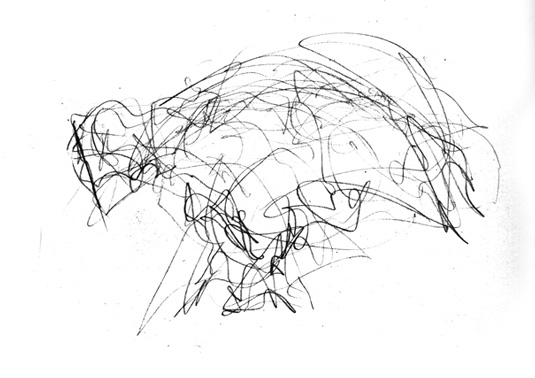Top tips for designing a terrifying creature
Plenty of sketching and a good helping of research and references shape Jim Pavelec's intensely terrifying monster.

There are two basic principles that I keep in mind when designing a creature. One is to base the foundation of the beast in our natural reality, so that it is recognisable no matter how 'out of this world' it is, and two is to strategically employ the concept of exaggeration.
Hone your illustrator skills with these brilliant tutorials
First things first, your beast needs to have some foundation in reality. If the creature is just a random, unrecognisable amorphous blob the viewer will not take it seriously. For example, consider the quintessential monster, H R Giger's Alien. If you look at the alien, you will notice that it has a basically humanoid body structure – two arms, two legs and a head.
It is Giger's understanding of anatomy and unique sense of design that make this creature so effective. It's because we can see that little bit of humanity in it that it's so scary to us. So, to make your creatures more powerful, swat up on your anatomy, and I don't just mean human. Study the physiology of mammals, insects, and reptiles and implement them into your designs.
Trust me, no matter how sick you think your design is there will be something already existent in nature that is sicker and more frightening than anything a human can imagine.
Secondly, you need to exaggerate some elements of your creature to make it over the top, and properly frightening. Give it enormous shoulders and arms in comparison to its head to make it hulking.
Horns should be huge and twisted, claws ought to be long and razor sharp. Oversized eyes, or tiny eye slits: the finer points of the design are up to you. If you combine exaggerated elements with naturalistic anatomy, your creatures will then be both convincing and terrifying.
Daily design news, reviews, how-tos and more, as picked by the editors.
01. Sketching

I do a quick sketch in ballpoint pen and scan this in at 300 per cent, then use a level adjustment in Photoshop to turn the blacks into a light grey. I then print this out on a 9x12inch piece of Borden & Riley bleedproof paper for the basis for the final drawing.
02. Head's up

I go straight in to drawing the head. I sometimes find this is the best way for me to create a personality for the creature, which I can then carry out through the rest of the design. I exaggerate the shape of her face and its features to add to its creepiness.
03. Bird references

Looking closely at reference photos of falcons and owls I work in the details of the Harpy's arms and legs. In the arms I want to combine a selection of avian and human features, while keeping the legs strictly bird-like.
04. Adding the wings

I finish up the drawing by closely examining the wings of various birds of prey when they are folded against their bodies, then applied what I saw to the Harpy drawing.
With a strong base in animal anatomy, and a strategic use of exaggeration I have tried to design a unique and interesting take on the Harpy figure of classical legend.
Words: Jim Pavelec
Jim Pavelec lives in a world surrounded by demons, monsters and devils. He's the author of the how-to book Hell Beasts. This article originally appeared in ImagineFX issue 25.
Like this? Read these...
- How to design an original sci-fi character
- 3 Tips for creating translucent vampire skin
- Free Photoshop brushes every creative must have

The Creative Bloq team is made up of a group of art and design enthusiasts, and has changed and evolved since Creative Bloq began back in 2012. The current website team consists of eight full-time members of staff: Editor Georgia Coggan, Deputy Editor Rosie Hilder, Ecommerce Editor Beren Neale, Senior News Editor Daniel Piper, Editor, Digital Art and 3D Ian Dean, Tech Reviews Editor Erlingur Einarsson, Ecommerce Writer Beth Nicholls and Staff Writer Natalie Fear, as well as a roster of freelancers from around the world. The ImagineFX magazine team also pitch in, ensuring that content from leading digital art publication ImagineFX is represented on Creative Bloq.
